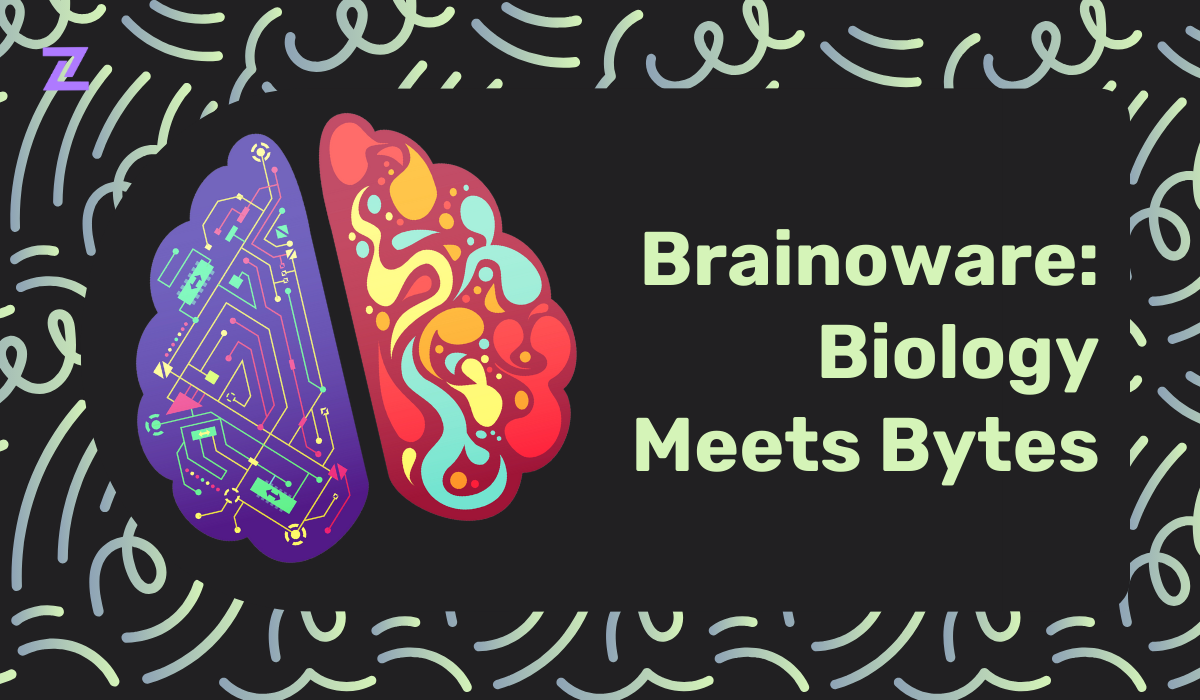
The forefront of computing is witnessing a groundbreaking leap, as researchers under the leadership of Feng Guo and his team have achieved a significant milestone by fusing machine learning with cerebral organoids – miniature, lab-grown replicas of the human brain. This revolutionary approach marks the inception of Brainoware, a hybrid biocomputer that elegantly combines human brain tissue with conventional electronic circuits. Beyond the constraints of traditional silicon-based computing, Brainoware not only promises enhanced potency but also boasts remarkable energy efficiency.
At the heart of this pioneering endeavor is the convergence of artificial intelligence and cerebral organoids. These tiny, intricately crafted models of the human brain serve as the biological foundation for Brainoware, representing a remarkable synergy between the innate complexities of human cognition and the precision of artificial intelligence. In a realm dominated by traditional silicon-based computing, Brainoware emerges as a potent contender, offering capabilities that extend beyond the confines of current technology. Its integration of human brain tissue into the computing process introduces a level of sophistication and adaptability previously unattainable.
While these brain organoids are miniature compared to their human counterparts, their ability to adapt and evolve in response to stimulation mirrors the learning process of our own brains. Despite their simplicity, these organoids possess the uncanny capacity to process information in a manner reminiscent of human cognition. It's this adaptive response that forms the bedrock of the potential revolution in artificial intelligence that Brainoware heralds. In addition to its enhanced potency, Brainoware brings a notable advantage in terms of energy efficiency. Traditional computing architectures, heavily reliant on silicon, often face limitations in power consumption and heat dissipation. Brainoware, with its integration of cerebral organoids, presents a promising solution by tapping into the energy-efficient nature of biological processes. This not only addresses environmental concerns but also positions Brainoware as a sustainable computing alternative for the future.
To demonstrate the practical prowess of Brainoware, the research team engaged in voice recognition experiments. Training the system on 240 recordings of eight distinct voices, the organoid's neural activity patterns varied in response to each speaker. The machine-learning algorithm, in turn, learned to interpret these distinctive patterns, achieving an impressive 78% accuracy in identifying speakers. This isn't just about recognizing voices; it's a testament to the versatility of Brainoware. The team envisions its application in an array of computational tasks, pushing the boundaries of what biocomputers can achieve. The fusion of biological neural networks within brain organoids with conventional AI algorithms creates a platform poised to outperform traditional computing methods. The researchers aptly named their creation "Brainoware" to signify the bridge they are constructing between AI and organoids. In a computing landscape dominated by interconnected nodes forming neural networks akin to the human brain, the team poses a fundamental question: can the biological neural network within brain organoids be leveraged for computing purposes?
The process involves placing a single organoid onto a plate containing thousands of electrodes, establishing a direct connection between brain tissue and electronic circuits. Input information is then translated into a pattern of electric pulses, delivered to the organoid. The resulting neural activity pattern is captured by sensors and decoded through a machine-learning algorithm, offering a glimpse into the potential of merging biological and electronic computing. The technology not only promises to revolutionize AI but also offers unprecedented insights into the functioning of the human brain. Brain organoids, replicating the architecture and function of a working brain in ways simple cell cultures cannot, open avenues for studying neurological disorders such as Alzheimer's disease. Furthermore, Brainoware could potentially replace animal models, offering a more ethical and accurate platform for testing the effects and toxicities of different treatments.
Brainoware stands as a testament to the symbiotic potential of human intelligence and artificial intelligence. The amalgamation of brain organoids with conventional electronic circuits paves the way for a new era in computing, where biology and technology converge to unlock unprecedented possibilities. Yet, the path to realizing the full potential of Brainoware is not without hurdles. Keeping organoids alive poses a significant challenge, requiring meticulous care and maintenance in incubators. As tasks grow more complex, demand for larger 'brains' may present logistical challenges. The researchers acknowledge the need to engineer brain organoids for increased stability and reliability, crucial for seamless integration into existing AI computing systems. As researchers continue to refine Brainoware's capabilities, investigating how brain organoids can adapt to more complex tasks and enhancing their stability, the future of computing appears both exciting and transformative. With each pulse of electrical stimulation and every decoded neural response, Brainoware propels us into a future where the boundaries between the biological and the artificial blur, opening avenues to redefine the very essence of intelligence and computation.